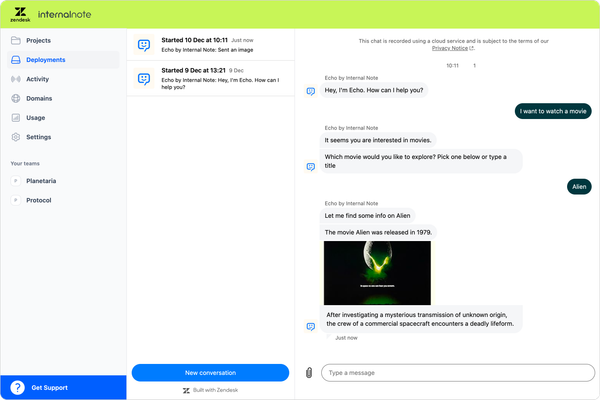
Instructions for Zendesk Agent Copilot auto-assist
Zendesk’s Agent Copilot gets a major upgrade with Instructions—a new feature guiding agents through manual steps when automation isn’t viable. Combined with suggested replies and next actions, Copilot now supports hybrid workflows, streamlining both digital and physical processes.
Within the Zendesk platform, there are many ways AI can help your team deliver great customer care.
AI Agents sit in front of your team to assist customers by answering questions, offering information, and automating as much of the support process as possible. Agent Copilot, on the other hand, lives on your team’s side. It helps your human agents handle the more complex, high-value tickets that need escalation.
Copilot works alongside agents, reducing manual work and giving them the space to add a human touch where it matters most.
Agent Copilot
Agent Copilot offers four types of support:
- Provide context
- Suggest replies
- Offer next actions
And newly releases, it can show step-by-step instructions to your agents.
Let’s break them down.
Provide Context
When a ticket is created, Copilot gets to work. It detects the intent (why the customer is contacting you), the sentiment (how they feel), and it highlights entities (what is their question about).

It then surfaces a summary, similar tickets, merge suggestions, and full customer context—giving agents all the information they need before they even read the conversation.
Suggest Replies
Even with AI Agents deflecting the bulk of incoming tickets, some simpler ones still reach the inbox. Copilot suggests immediate responses based on macros, past tickets, or help center content. Agents can approve the reply or adjust the tone and content.

If a bit more back-and-forth is needed, Copilot initiates procedures—guided flows to collect information (like a new address) or present customer options (refund or replacement?).
These procedures live in your Knowledge base and can skip steps if enough data is already available. A complete message from a customer? Copilot jumps straight to action. Vague request? It prompts for more details first.
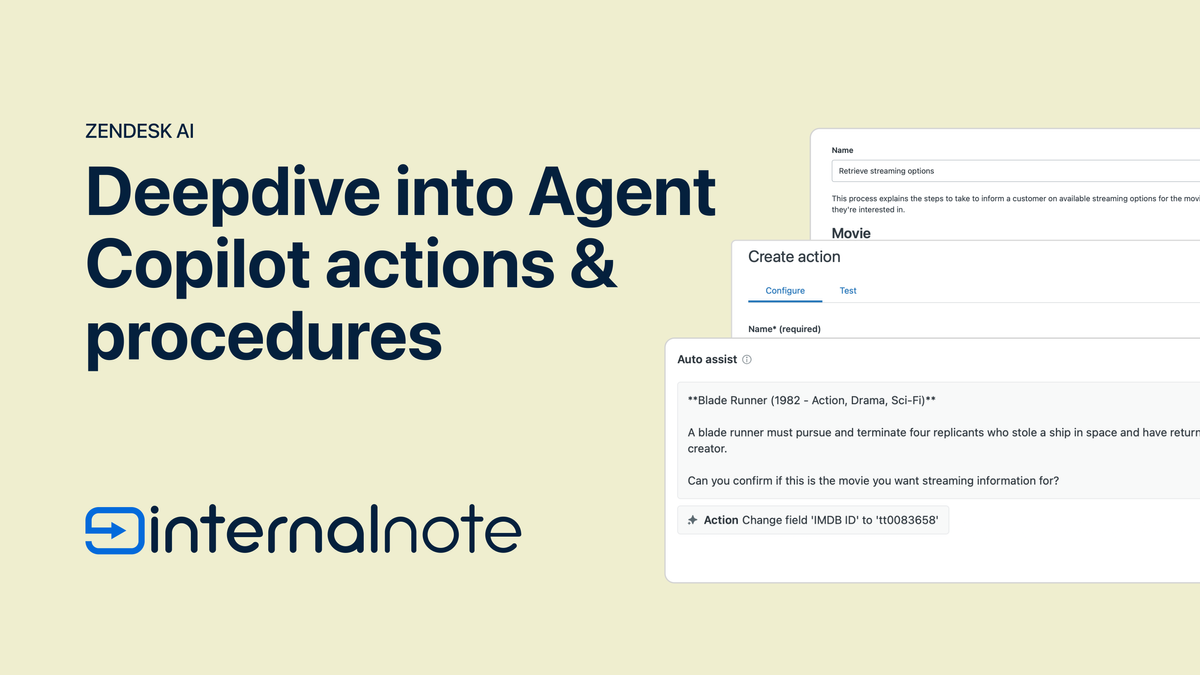
Next actions
Some problems require more than a response. Rebooking a flight means updating your booking system. A delivery change requires checking shipment status and adjusting the order.
That’s where actions come in. They let agents:
- Fill in ticket fields
- Update assignees
- Change priorities
- Run custom API calls to external systems
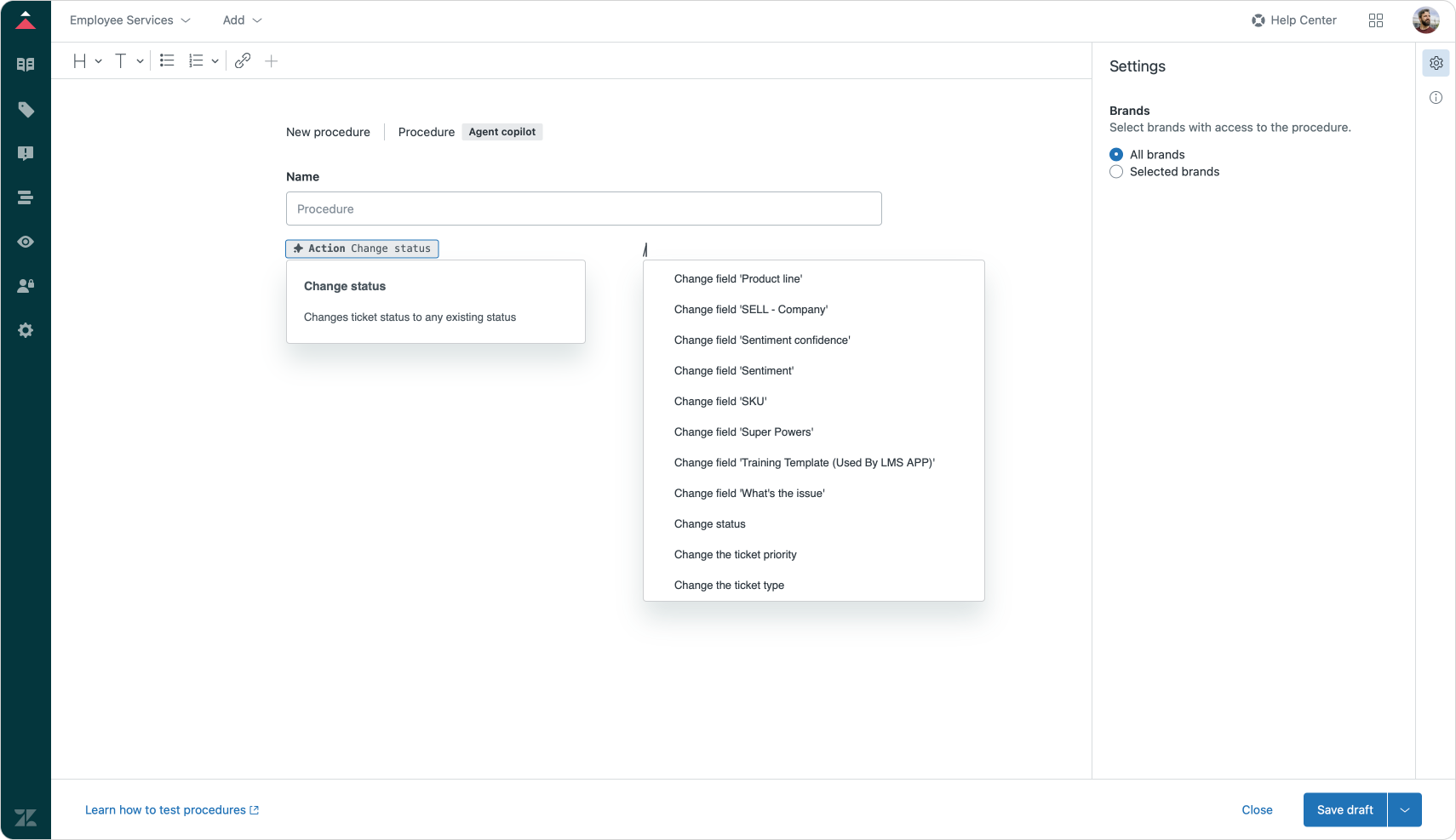
These actions ensure agents don’t just reply—they actually resolve the ticket. Copilot suggests the right actions, and once an agent approves, the system carries them out automatically.
Instructions for Agents
But not everything can be automated. Some steps are physical or offline—like printing vouchers, packaging items, or replacing hardware.
Or maybe the tool in use doesn’t have an API, or building one isn’t worth the cost. In those cases, agents must take manual action.
Instructions fill that gap. This new Copilot feature displays step-by-step guidance directly in Agent Workspace, telling agents exactly what to do.
Adding instructions
One of the questions I get from time to time on this blog is readers asking me to add me to the mailing list.
Technically, it’s self-serve. But it still lands in my inbox. It's a logical question and one we can handle via procedures and instructions.
Since Internal Note is managed by myself alone, and I don't get these subscriber requests that often, figuring out how the API works to create a Custom Action would be a bit overkill.
The new Instructions however are a perfect fit. I can note down the steps an agent (me!) should take in my publishing platform to add a member so that a customer does get stuck, I can see exactly what I should do to add them as a subscriber.
Adding instructions is done via the new Add instructions option in the procedure editor. When clicked, a block is added to your procedure where you can write down the steps for an agent to take.
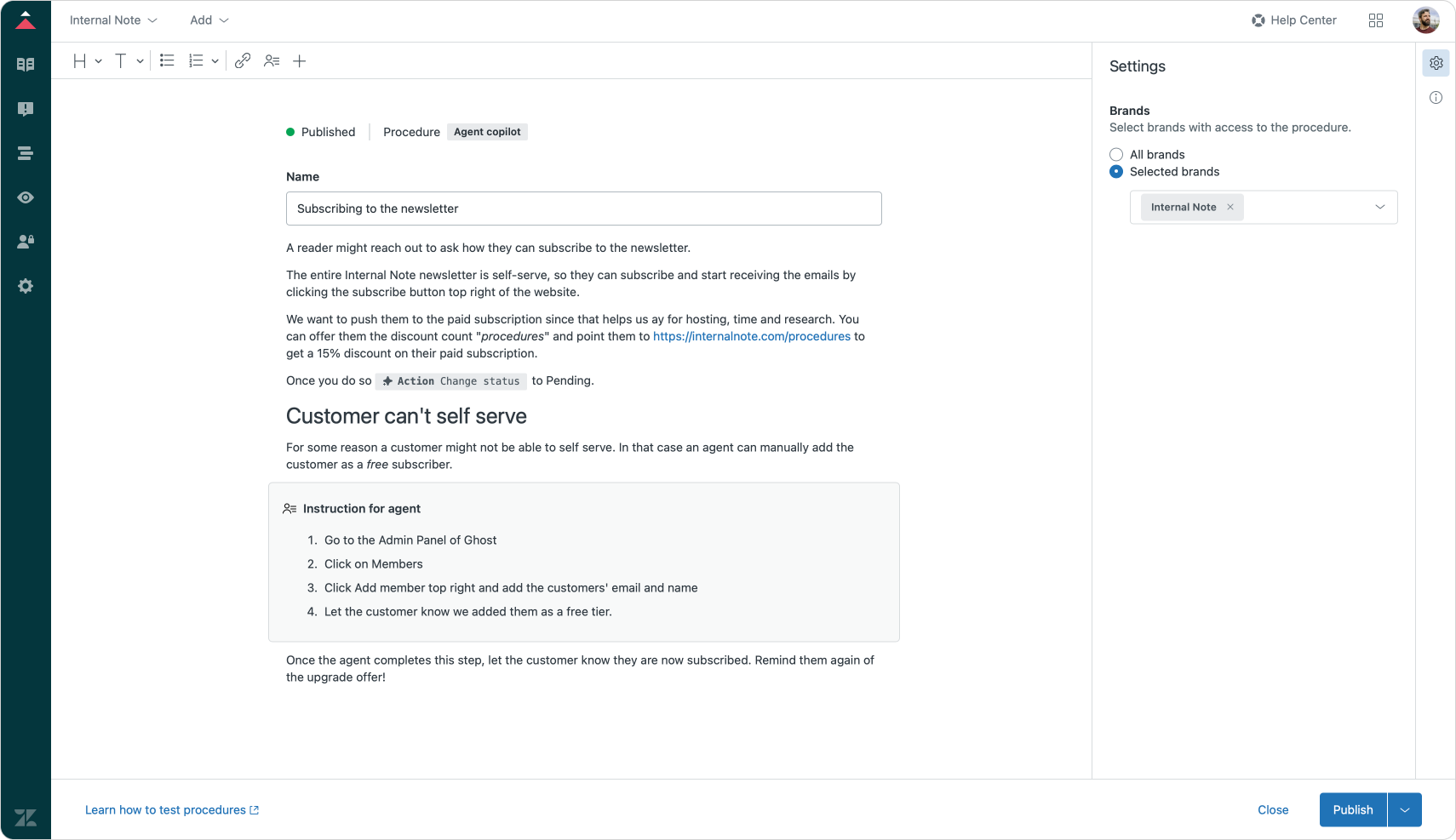
The cool thing here however, is that instructions are part of your process. You can write a regular procedure first that offers solutions to the customer. You can add conditional logical so that the manual steps only appear if all else fails. And you can add logic after those steps, so that if an agent completes their work, Agent Copilot can take over again and run the rest of the procedure.
Agent Experience
Let’s say a subscriber can’t sign up themselves.
The procedure starts by offering the customer a self-service path—with a nice discount code. If that fails, Copilot presents manual instructions to the agent.
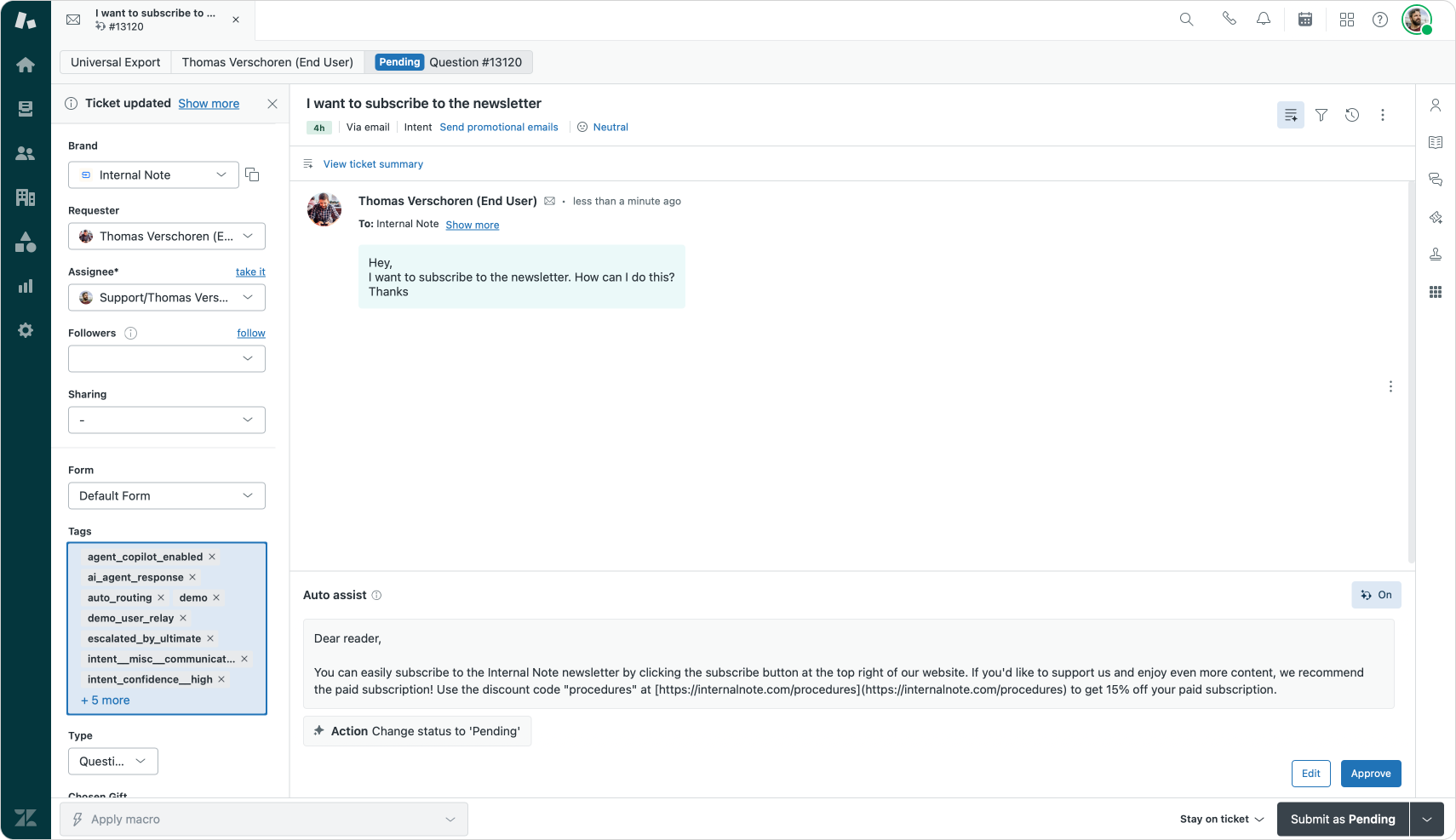
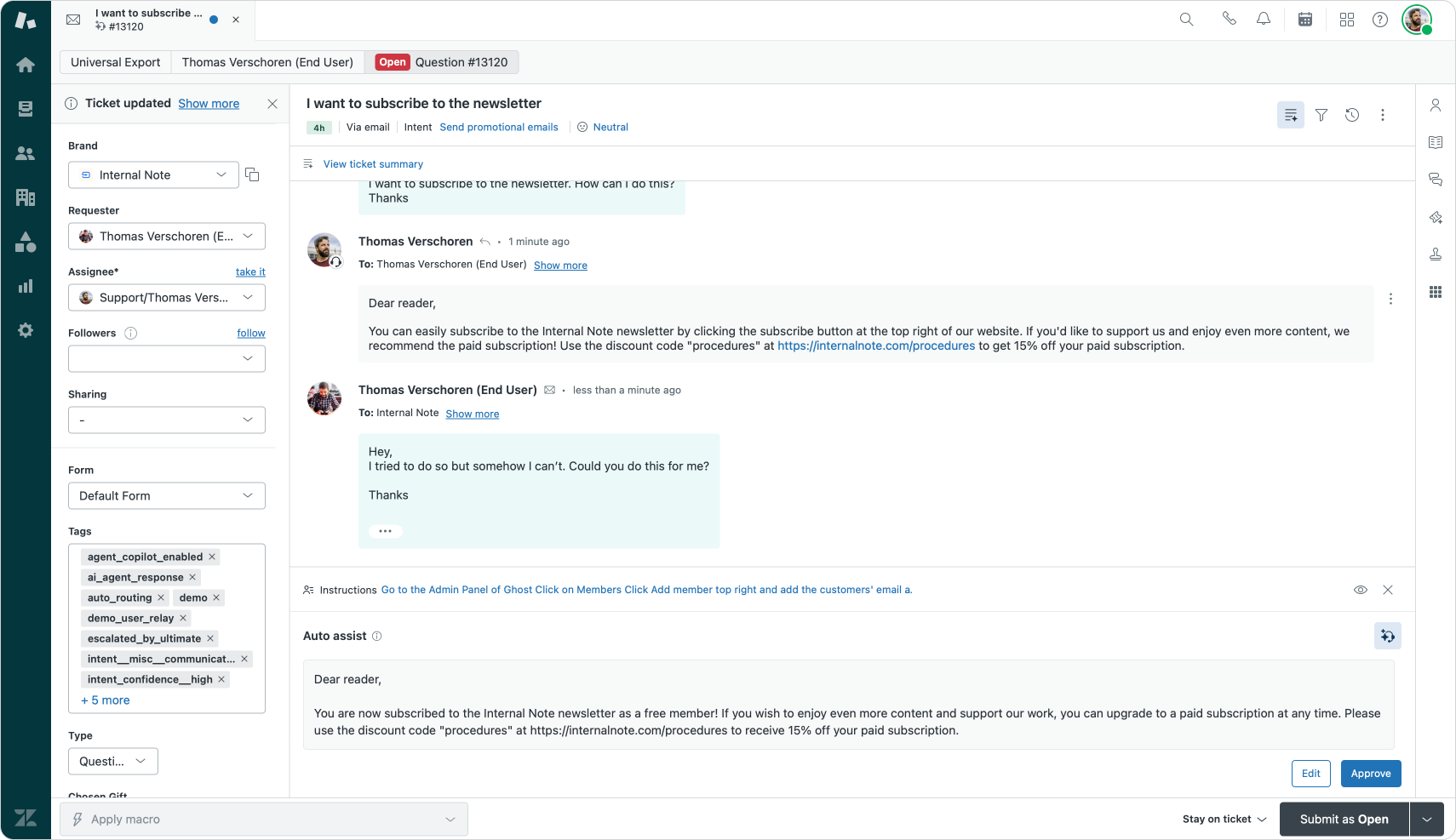
If the agent knows the process, great—they act and confirm. If they’re new, they click to reveal detailed steps. Once completed, Copilot sends the confirmation message to the customer.
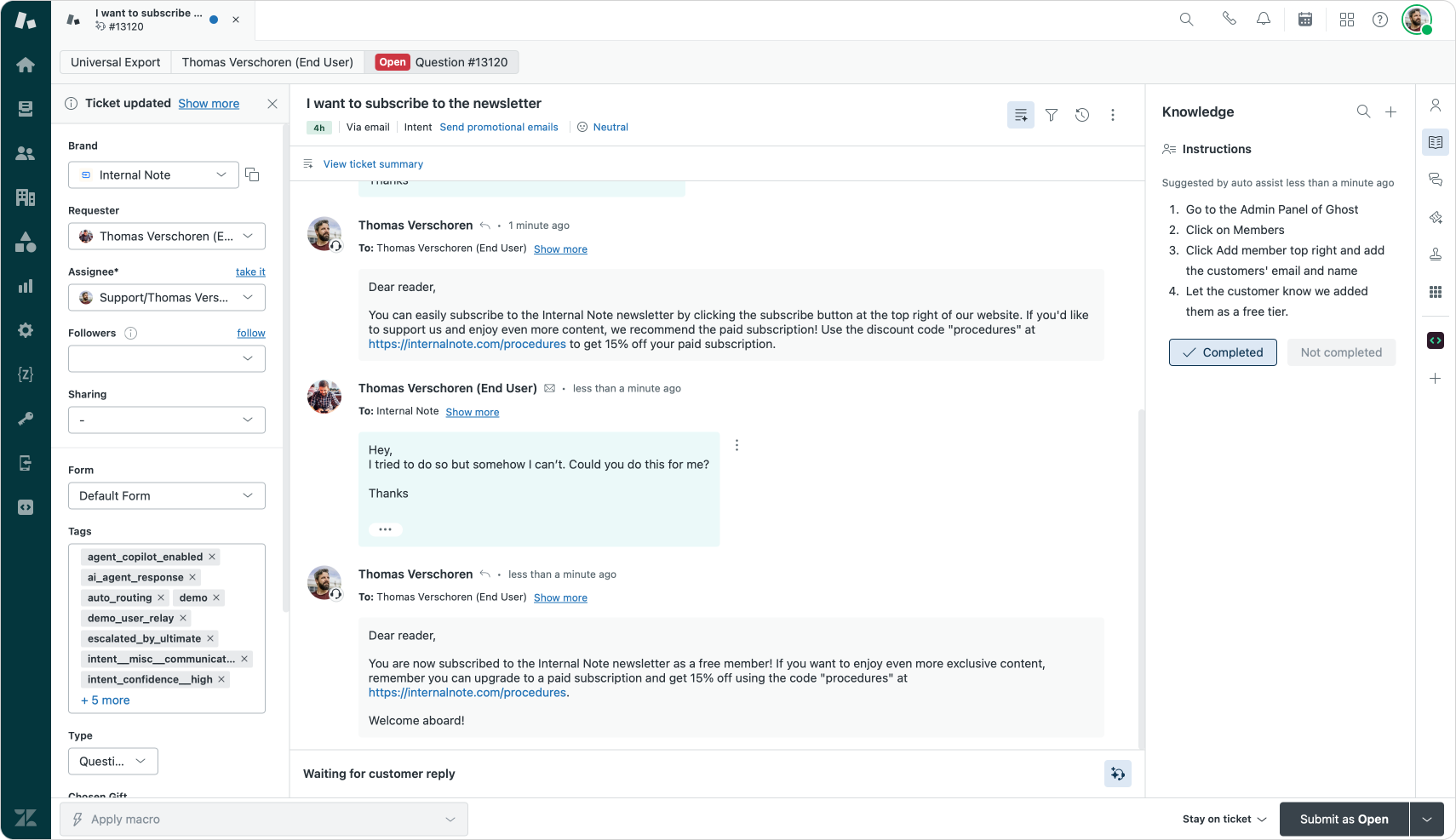
These instructions provide a perfect hybrid between automation (suggested replies and next actions) and manual actions done by your team. But most important, all the context requires to resolve the customer question is part of one procedure and all information requires is visible in Agent Workspace.
Conclusion
Instructions close a key gap in Agent Copilot.
For one, they bridge the gap between automation and agent actions. Things that can't be automated via API are still handled by agents, but the steps taken are part of the entire process and automation can take over again once the agent does the work.
This is ideal for physical actions like "replacing printer paper", "emptying the coffee machine tray" or "validating a returned product"
They also offer a way out when the cost to automate is too high. If it's faster, easier or cheaper for a human to do it, then building out an entire API to automate it might be overkill.
Secondly, they are great to onboard new team members. Agent Copilot already takes away the burden of learning all processes before diving into tickets. By offering replies and next actions, Agent Copilot guides new team members through processes, showing them how things are done, while offering them simple ways to intervene and add internal notes to request help form a team lead.
With the new instructions those actions they are requires to do entirely themselves are now also offered within Agent Workspace. They can follow the steps to change a booking, print a shipping label or reach out to IT and then pass control back to Agent Copilot to offer them the next responses and actions.
And for you, the reader? Well, take this article as an opportunity to subscribe if you haven't done so and make use of the 15% discount on yearly subscriptions and support this blog!




